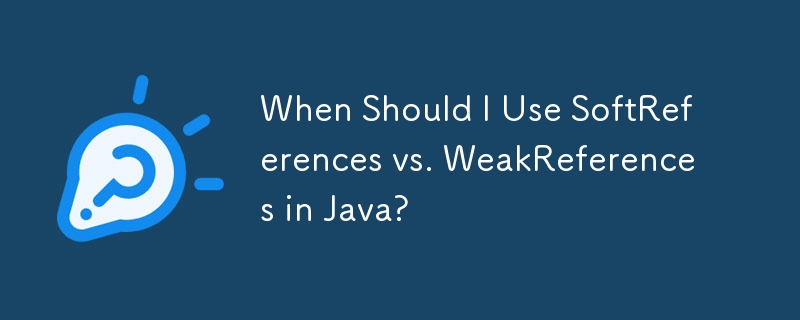

Understanding the Distinction between SoftReferences and WeakReferences in Java
Java provides two types of references, SoftReferences and WeakReferences, that offer varying degrees of influence on an object's lifetime in memory.
SoftReferences
As Ethan Nicholas explains in Understanding Weak References, a SoftReference indicates an object that, while not strongly referenced, is still valuable. The garbage collector will retain softly referenced objects as long as memory is abundant. This makes SoftReferences ideal for caches, where infrequently used objects can be retained until memory becomes scarce.
In the Java Virtual Machine (JVM), Peter Kessler notes a difference in handling between client and server JREs. The client JRE prioritizes a small memory footprint and eagerly clears SoftReferences to prevent heap expansion. Conversely, the server JRE prioritizes performance and attempts to retain SoftReferences even at the cost of heap expansion.
WeakReferences
In contrast to SoftReferences, WeakReferences designate objects that should be discarded immediately upon garbage collection. They are used in scenarios where an object's continued existence is not crucial, such as temporary resources or objects that can be easily recreated.
WeakReferences are convenient for breaking circular references, where two objects hold strong references to each other, preventing garbage collection. By introducing a WeakReference for one object, the circularity is broken, allowing both objects to be garbage collected when no other strong references exist.
Key Differences
The above is the detailed content of When Should I Use SoftReferences vs. WeakReferences in Java?. For more information, please follow other related articles on the PHP Chinese website!




